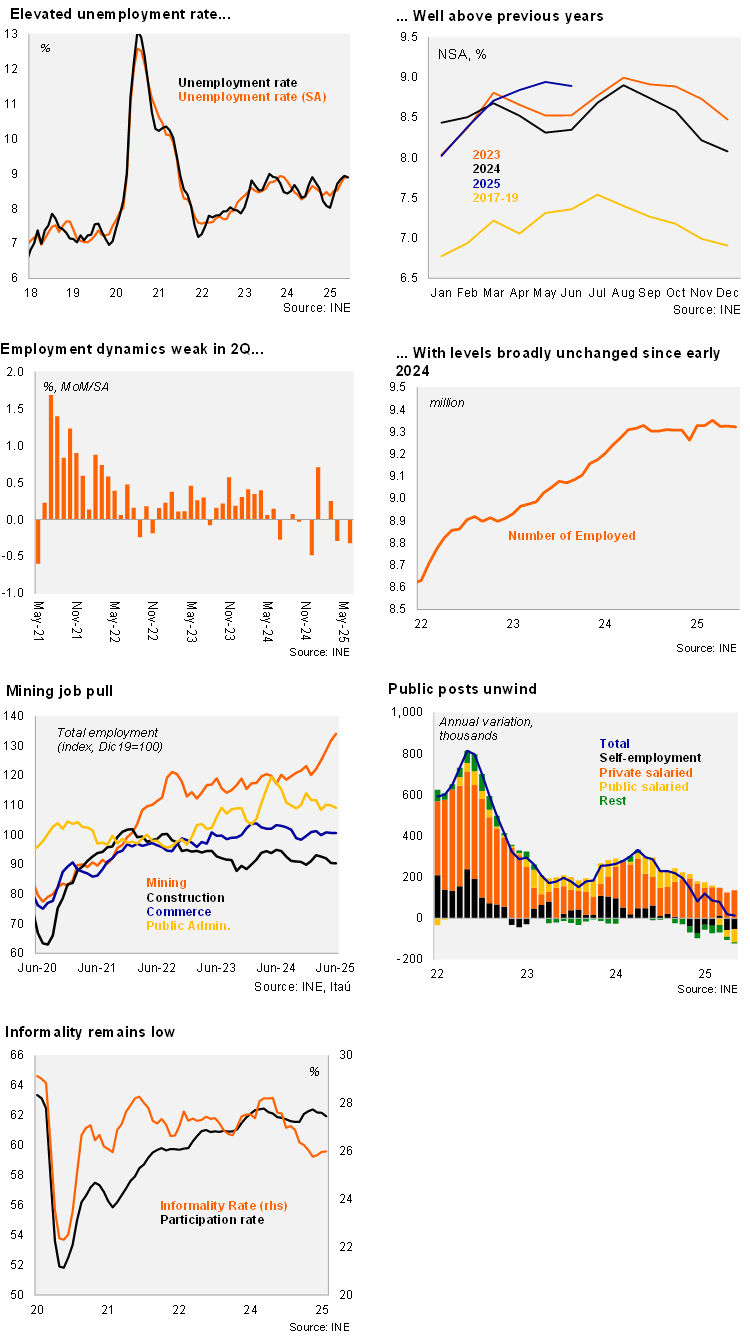The unemployment rate during the second quarter of the year reached 8.9%, a tick below both the below market consensus and our call (9%). Over the last year, the unemployment rate rose by 0.5pp, despite the participation rate falling 0.2pp to 61.9%. On a seasonally adjusted basis (SA), employment growth was essentially flat from the May quarter, falling 0.3% between 1Q25 and 2Q25. The SA series shows the unemployment rate rising from 8.5% in 4Q24 to 8.9% during 2Q25. The unemployment rate (SA) has hovered at or above the upper bound of the BCCh’s estimated NAIRU (7-5-8.5%) for the past year. The female unemployment rate (SA) remained at 9.9%, the highest in INE’s series for ex-crises years. Employment (SA) sits below 2Q24 levels, while the labor force increased 0.5% YoY. Labor market informality remained at 26%, unchanged from the previous month (2.2pp down from 2Q24). In line with upbeat investment in the sector, mining generated employment (+40 thousand over one year), along with the IT and communications sector (36 thousand). Trade, transport and construction are notable drags, destroying an accumulated 109 thousand posts since 2Q24. While the annual employment change continues to show an offset between positive formal job creation (208 thousand) and a decline in informal posts (-208 thousand), at the margin the formal job dynamics deteriorated.
Our Take: Overall, today's data reaffirms our view of persistent slack in the labor market, in the context of substantial increases in labor costs over the past few years. The surge in labor costs continues to take its toll on the labor market and slack should persist in the near term. While the economy consolidates its growth recovery, the pull is derived from the external backdrop, mining investment and transitory boosts from tourism and frontloading of fiscal spending, raising concerns over a jobless recovery scenario. The nominal minimum wage has increased by a cumulative 50% since April 2022, a reduced work week is being phased in, and a pension reform will be implemented. Building on these measures, the latest nominal minimum wage adjustment path (3.6% increase in May and 1.9% in January) exceeds the 3.8% expected for inflation this year. Nominal labor costs increased by an elevated 8.5% YoY in May. We expect an average unemployment rate of 8.7% this year, with risks tilted to the upside (8.8% average YTD). Still weak commercial loan dynamics, growing labor market slack amid anchored inflation expectations consolidate the central bank’s scenario of lower the policy rate over the upcoming quarters. We see a yearend rate of 4.25%.

